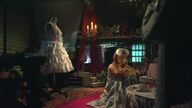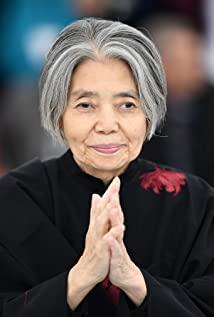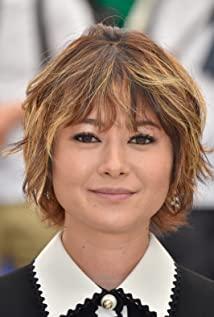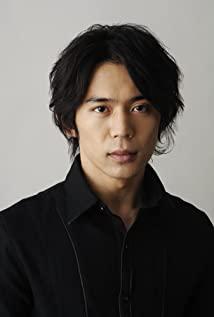Tetsuya Nakajima, the director of the fifties, has only five films so far, which can be said to be relatively low-yield. Since his debut film "The Story of His Wife" in 2004, he has only made one film every two years on average. Nakajima made his debut in commercials. The opening of his works is very energetic and very attractive: the gorgeous art style, the exaggerated performance style of the actors, and the non-linear narrative deconstruction of the story.
In 2004, "The Story of My Wife" started as a two-dimensional animation, a locomotive with fire, and music with emotion. Immediately after the peach was hit and flew away, a carload of cabbage flew into the sky, and then time was pulled back before the peach and the witch (strawberry) met. The TV movie at the station looked back at Momoko's life experience and immediately caught people's attention. Our story begins when a rococo-inspired girl meets a hooligan who rides a motorcycle and wears a special attack uniform. The use of light and shadow in this movie is very beautiful, and it is a movie full of sunshine. Many scenes seem to be filmed. Like in the MV, an exaggerated comedy shows the friendship of two very different girls.
Unlike the superficial impression of the two girls, Taozi is a very independent and strong girl, even a little indifferent. When her mother left, she could be so calm, and she also said this famous quote: "Humanity is facing Great happiness is often at a loss, and it takes more courage to seize happiness than to endure pain. " The Miko (Strawberry) is a girl who is accustomed to relying on others and hides her vulnerability with the arrogant appearance of the beast.
The fluffy rococo dress can make people fly, the vivid colors overflow, and the music in the film is also very good, or healing, or full of vitality, Nakajima chooses songs to match the movie, after which his several works can also be reflected.
In 2006, "The Life of the Disgusted Matsuko" began with the death of the heroine, Matsuko. Tetsuya Nakajima told a bitter and cruel tragic story in a musical comedy style. The life of a woman who lived only to be 53 years old is reviewed against the background of gorgeous singing and dancing. Kawajiri Matsuko is a woman who often dreams. She desperately longs for love. She almost dedicates everything to love but never gets it. Although her fate was bumpy, she never gave up hope in life. No matter how broken her life is, she still instinctively survives. Every time she gets frustrated, she says, "My life is over," but she stands up again. She has been hurt by men since she was a child; her father, students, colleagues, and unreliable boyfriends, even if she is hurt again and again. She still loves those strong men humbly. She said that it is better to love someone than to be alone and that it is better to fight and be beaten than to be moldy alone. She told herself that the reason for living was not for herself, but for the people she loved deeply.
The tone of the whole film is really warm and bright. When she is loved, her world is full of songs and beautiful colors. All around her are happy birds and beautiful stars. The red wildflowers on the walk from home, and the pink cherry blossoms around when I returned to the barbershop. At the moment of death, the lawn was full of yellow flowers. This woman was frustrated time and time again, but she still worked hard to choose one man after another to love with all her heart, because she always believed that the world had a better side. Nakajima jokes about the tragedy of life from a comedy perspective.
That warm nursery rhyme is nice. "Stretch out your arms, stand on tiptoe, you can reach the blue sky...", "Dream Train", "Candy Tree", and "Happy Wednesday" are all filled with a kind of fairy tale songs. BGM adds a lot to the movie. The noisier it is, the more lonely it is.In 2008's "Pago and Magic Picture Book", inherited the splendid art style and exaggerated modeling of the first two works. There was a Hawaiian song and dance at the beginning, and then flashbacks began with the illustrator's memories. Various elements are organized together to build a colorful and childlike world. Tim Burton used the dark and cold Gothic style, while Tetsuya Nakajima used the brilliant, bright, and warm comic style, which also showed warmth, but it was even extreme. Adults are infected by the innocence and kindness of children, and eventually, there is no cure and they will be cured.
The 2010 "Confession" adopted a point of view (POV) structure. In the opening scene, Song Takako pointed out the murderer. Do you think this suspenseful story is over? The story of revenge has never been interrupted. Next, Tetsuya Nakajima deepened the events layer by layer by switching the perspective of the characters. The audience acquires information bit by bit, each character's perspective presents an ingenious relationship from top to bottom, and each person's confessions piece together the truth of the incident. For the same event, every time the perspective is changed, the truth of the event goes deeper.
This time, Nakajima gave up the gorgeous style of the past and turned to the dark side. It is a story of a mother's revenge, bloody and violent, but it can be shot so elegantly. "When the owl sleeps", the soundtrack that appears in the 44th minute of the movie, has a warm and beautiful feeling, but unfortunately, everything is nothing. "The days after that are just killing time; laughter, tears, everything, even living, is just boring, killing time." Radio Head's "Last Flowers" can be described as the finishing touch, everyone They are all people who cannot be redeemed in the night but need love. Destroying the last warmth and kindness in the world is real despair. Melancholy finally broke out at the chorus, but it was still calm and it finally died.
In 2014's "Desire", the dazzling editing at the beginning was a bit dizzying. Continuing the dark direction of "Confession," it even has the feeling of Yuan Ziwen and Miike Takashi. The supporting cast is strong enough, but the story feels a little crazy. In short, I still don't like this new film.Tetsuya Nakajima can catch the attention of viewers not only at the beginning, but almost every movie is full of high energy. He is also a director who made his commercial debut, just like David Fincher. The image style is powerful and shocking. Yes, Nakajima's lens is either gorgeous or elegant and cold, which is also unforgettable. Some people may call him a "visual department" director, but his "visual department" also has connotations and depth.
View more about Kamikaze Girls reviews











